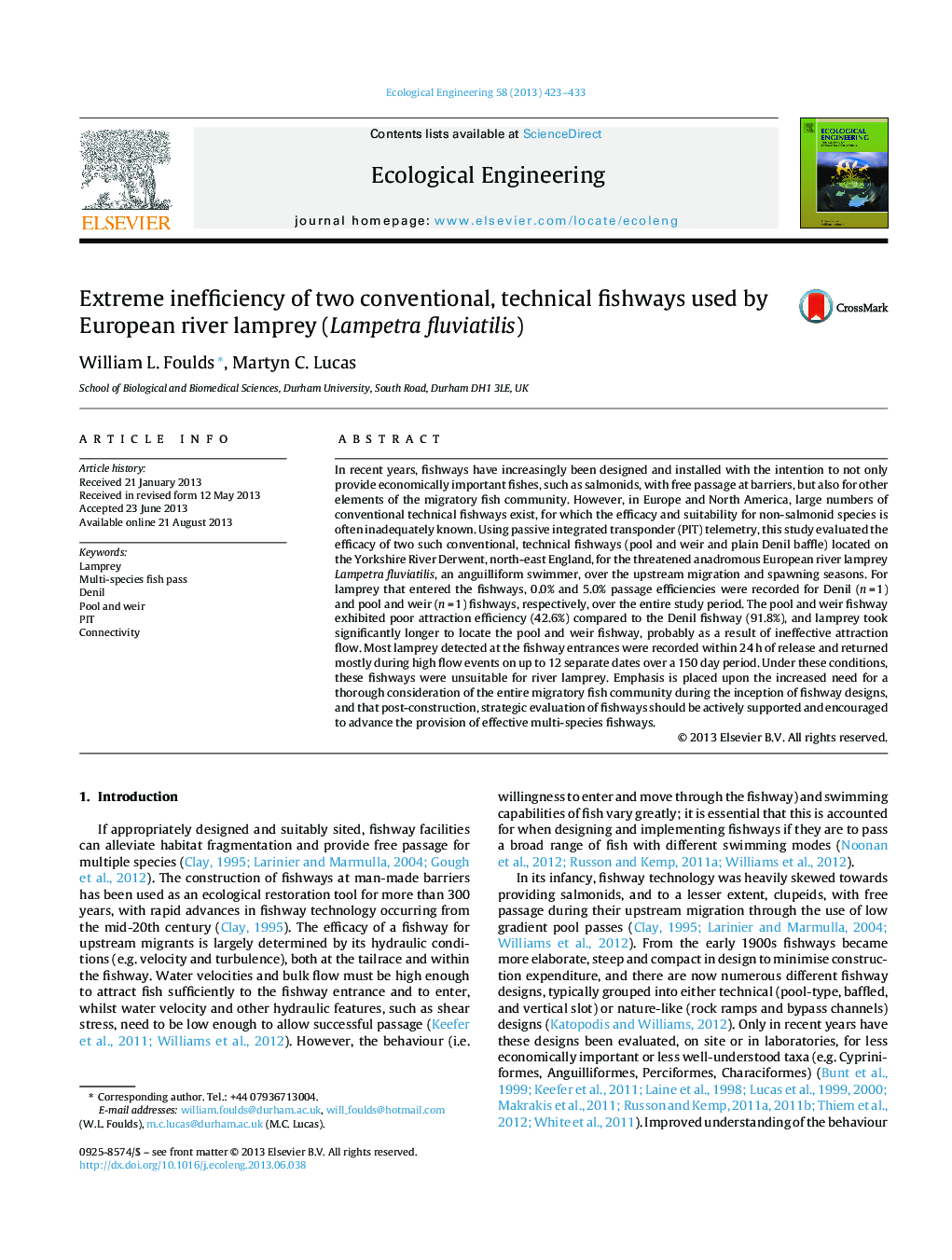| کد مقاله | کد نشریه | سال انتشار | مقاله انگلیسی | نسخه تمام متن |
|---|---|---|---|---|
| 6302570 | 1618040 | 2013 | 11 صفحه PDF | دانلود رایگان |

- PIT telemetry revealed exceptionally low passage efficiencies (0-5%) for migrating river lamprey at two technical fishways.
- Attraction efficiencies of 43 and 92% for the pool-weir and Denil fishways, respectively, were found in this study.
- Lamprey failed to pass despite re-entering fishways on up to 12 separate days and were delayed at barriers for up to 150 days.
- The inefficiencies are believed to be due to hydraulic conditions and fishway geometries.
- Recommendations of fishway designs likely to be suitable for upstream-migrating, non-climbing lamprey species are made.
In recent years, fishways have increasingly been designed and installed with the intention to not only provide economically important fishes, such as salmonids, with free passage at barriers, but also for other elements of the migratory fish community. However, in Europe and North America, large numbers of conventional technical fishways exist, for which the efficacy and suitability for non-salmonid species is often inadequately known. Using passive integrated transponder (PIT) telemetry, this study evaluated the efficacy of two such conventional, technical fishways (pool and weir and plain Denil baffle) located on the Yorkshire River Derwent, north-east England, for the threatened anadromous European river lamprey Lampetra fluviatilis, an anguilliform swimmer, over the upstream migration and spawning seasons. For lamprey that entered the fishways, 0.0% and 5.0% passage efficiencies were recorded for Denil (n = 1) and pool and weir (n = 1) fishways, respectively, over the entire study period. The pool and weir fishway exhibited poor attraction efficiency (42.6%) compared to the Denil fishway (91.8%), and lamprey took significantly longer to locate the pool and weir fishway, probably as a result of ineffective attraction flow. Most lamprey detected at the fishway entrances were recorded within 24 h of release and returned mostly during high flow events on up to 12 separate dates over a 150 day period. Under these conditions, these fishways were unsuitable for river lamprey. Emphasis is placed upon the increased need for a thorough consideration of the entire migratory fish community during the inception of fishway designs, and that post-construction, strategic evaluation of fishways should be actively supported and encouraged to advance the provision of effective multi-species fishways.
Journal: Ecological Engineering - Volume 58, September 2013, Pages 423-433